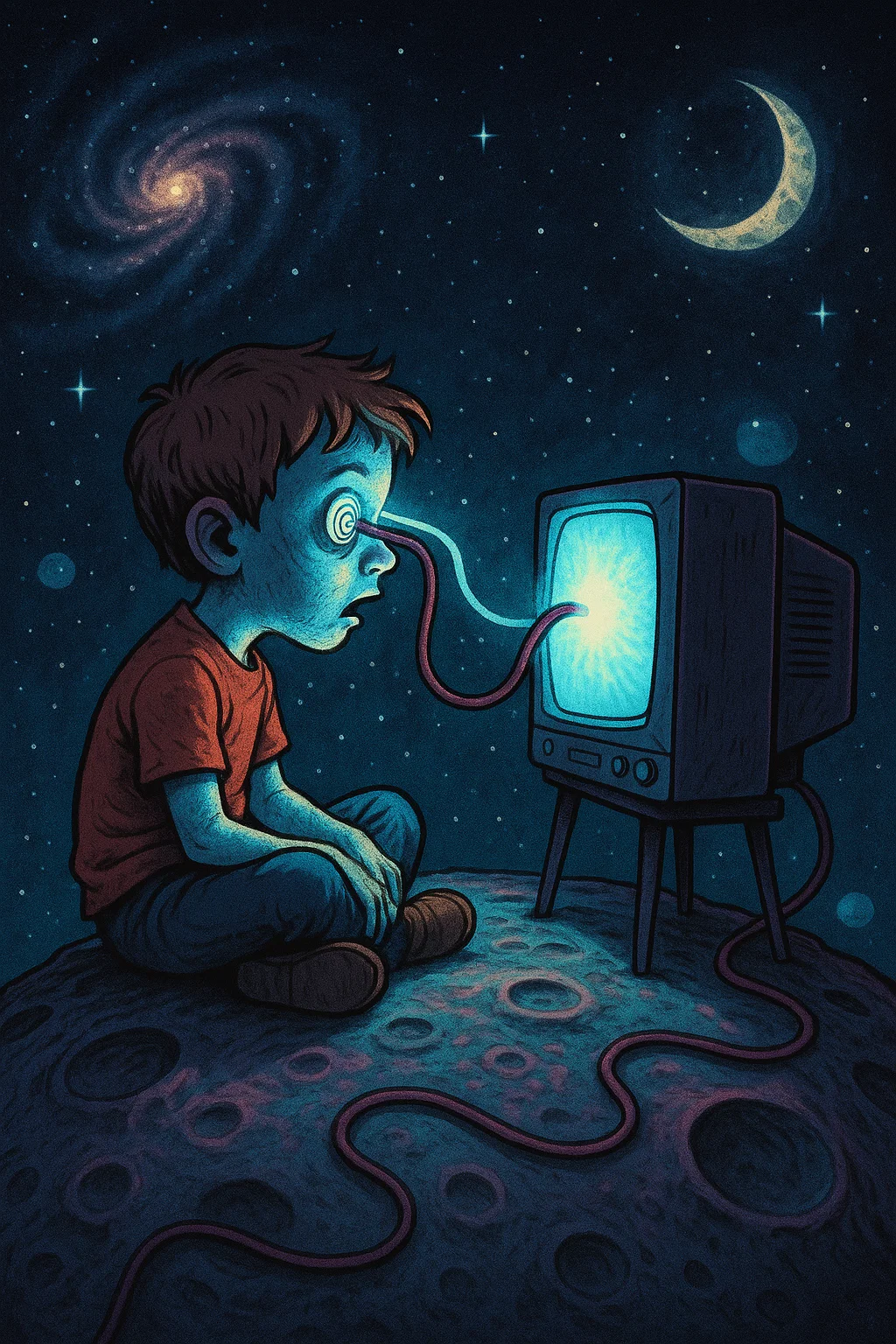Welcome to the digital daycare from hell.
Where YouTube algorithms raise toddlers. Where toy companies use psychological warfare. Where the line between entertainment and marketing doesn’t exist — and your kid’s attention span is just another revenue stream.
This post isn’t just about screen time. It’s about a trillion-dollar industry that sees children not as tiny humans, but as programmable, profitable puppets.
When Childhood Became Clickbait
Let’s talk about those bright, chirpy voices. The overly saturated colors. The inescapable sound of toy-unboxing videos.
That’s not innocence. That’s engineering.
These videos aren’t just random. They’re designed to overstimulate. To addict. To bypass critical thinking and tap straight into that primal dopamine loop.
“Most adults don’t realize how sophisticated children’s media has become — or how intentionally manipulative it is.” — Chase Hughes, behavioral profiling expert
Shows made for toddlers now cut every 2–3 seconds to keep the brain engaged. Sound effects, facial expressions, product placements. It’s not storytelling — it’s psychological entrainment.
YouTube Kids or Digital Crack?
It’s no coincidence your kid is melting down when the screen turns off.
That’s not just overstimulation. That’s a withdrawal symptom.
Apps like YouTube Kids and even “educational” games know exactly what they’re doing. They’re triggering dopamine releases at precisely timed intervals — teaching kids to expect instant gratification, noise, reward.
Then they grow up and can’t focus on anything unless it flashes, dances, and begs for attention.
Sound familiar?
The Toy Trap
Let’s not forget physical toys — especially the ones wrapped in digital marketing.
Ever notice how your kid suddenly NEEDS something they saw for three seconds in a YouTube ad?
That’s not a coincidence. That’s predictive advertising aimed at developing brains.
We’re raising children inside a shopping mall disguised as a cartoon.
And the worst part? We’re doing it because we’re tired. Because we need a break. Because we didn’t know better.
And the system fucking knows it.
The Gamified Childhood
Even games meant to be fun are turning into Trojan horses.
Games that mimic gambling mechanics. Games that sell skins and currency and rewards. Games that teach kids to obsess over “winning” and microtransactions and social validation.
And we call that normal.
Kids used to trade stickers. Now they’re learning to hustle pixels for clout.
It’s not just about screen time anymore. It’s about how that screen is teaching them to value themselves.
So Who’s Watching Your Kids?
Not you. Not teachers. Not even creators.
It’s the algorithm.
And the algorithm has no soul.
It doesn’t give a shit about childhood development. It wants data. Attention. And ad revenue.
It’s feeding your kid content based on clicks, not what’s good for them.
YouTube Kids isn’t curated by teachers. It’s curated by AI trying to keep your kid staring as long as possible.
So yeah, the cartoons got louder. The characters got weirder. The rabbit hole got darker.
Because that’s what works.
And we’re too tired, broke, or overwhelmed to stop it.
How to Fight Back (Without Guilt)
You’re not a bad parent.
You’re just raising kids inside a machine built to eat them.
So here’s how you gum up the gears:
Try This:
- Replace some screen time with boredom. That’s where creativity starts.
- Let your kid watch slow, calming content instead of fast-cut dopamine bait.
- Show them how to make things, not just consume them.
- Play the games with them — and talk about what’s real and what’s marketing.
🧠 When You Can’t Ditch the Screen: Soul-Safe Digital Content for Kids
Because sometimes, you do need the screen — but you don’t need it to rot their nervous system.
Here are calm, enriching, non-exploitative digital alternatives that don’t feel like a dopamine slot machine:
📺 Soothing Shows (Slow-paced, mindful, non-hyper)
- Bluey (Disney+) – Heartwarming and emotionally intelligent. Kids and adults love it.
- Daniel Tiger’s Neighborhood (PBS Kids) – Emotional regulation through gentle songs.
- Puffin Rock (Netflix) – Calm narration by Chris O’Dowd, soothing visuals, nature-based themes.
- Mister Rogers’ Neighborhood (YouTube/PBS) – Timeless. Slow. Deep. Like a warm blanket for their nervous system.
- Tumble Leaf (Amazon Prime) – Beautiful stop-motion, curiosity-focused, slow storytelling.
🎧 Podcasts (Safe for car rides, quiet time, or solo listening)
- Circle Round – Folk tales from around the world, narrated with empathy and music.
- Brains On! – Science and curiosity for kids who ask “why?” all day.
- Little Stories for Tiny People – Gentle, creative short stories for calm listening.
🎶 Music (for nervous system regulation, not overstimulation)
- Lemon Tree by Alexi Murdoch
- Instrumental playlists on Calm App or Spotify
- Snatam Kaur – angelic voice, soothing Sanskrit chants (great for naptime)
- Putumayo Kids collections – multicultural, feel-good soundtracks
📱 Apps That Don’t Hijack Their Brains
- Sago Mini World – Creative, open-ended play for toddlers. No ads.
- Endless Alphabet – Fun and slow-paced vocabulary building.
- Toca Boca – Pretend play apps that are ad-free and child-safe.
- Moshi: Sleep and Mindfulness – Bedtime stories, music, and meditation.
Journal Prompts (for you or your kid):
- What’s something that makes me feel good when there’s no screen around?
- What’s one thing I can create with my hands today?
- What do I wish adults understood about my world?
Real-World Rebellion:
- Set screen boundaries that feel like love, not punishment.
- Talk to other parents about what’s actually happening.
- Support media creators who protect childhood, not exploit it.
Burn the Rulebook
The one that says:
- “This is just how it is now.”
- “All kids are addicted to screens.”
- “It’s harmless.”
No.
Burn it.
Write a new childhood. A slower one. A sweeter one. One where imagination isn’t tied to a charging cable.
Signed, Someone who grew up staring out windows and now stares down algorithms.
🔥 This is part of Glitched Out: A 7-Part Rebellion Against Digital Decay —
If your kid can swipe before they can speak, you’re not alone — you’re targeted.
→ Previous: Pretty Lies & Digital Pimps
→ Next up: The Great Attention Theft: Why You Can’t Focus Anymore🎯 Want safer digital spaces for your family? Start with Nervous System Reset Rituals — my free, no-BS grounding guide. Subscribe here.


Leave a Reply